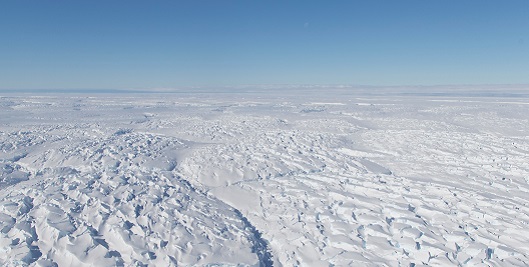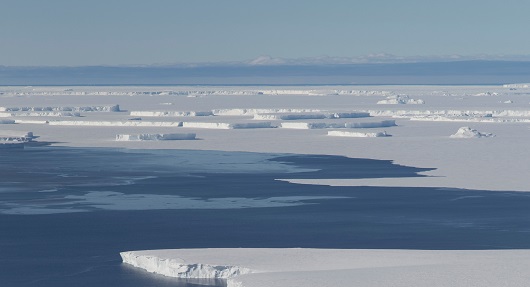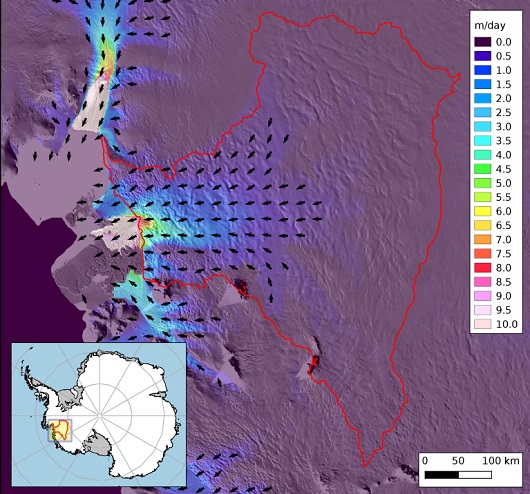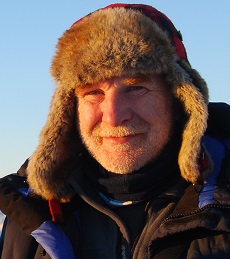New research to predict how global sea levels will rise

Researchers at the University of St Andrews have won two major grants of £438,000 and £540,000 to discover whether the collapse of a huge Antarctic glacier could raise global sea levels by as much as a metre by the end of this century.
Doug Benn, Professor of Environmental Change at the University of St Andrews (pictured below left), will lead the DOMINOS (Disintegration of Marine Ice Sheets Using Novel Optimised Simulations) project which will use computer modelling to examine how break-up of the glacier could increase the rate of ice flow into the ocean. Professor Benn will work with collaborators Jeremy Bassis (University of Michigan), Jan Åström and Thomas Zwinger (IT Center for Science, Helsinki) and Adrian Luckman (University of Swansea).
Dr Lars Boehme, Lecturer at the School of Biology and the Sea Mammal Research Unit (SMRU), will work within the TARSAN (Thwaites-Amundsen Regional Survey and Network) project led by Karen Heywood (University of East Anglia) and Erin Pettit (University of Alaska, Fairbanks) to measure the oceanic heat in front of the glacier and its potential to increase the glaciers melting rate.

NERC (Natural Environment Research Council) grants have been made as part of the International Thwaites Glacier Collaboration – a major scientific research project that aims to understand what is happening to the glacier in West Antarctica, and predict how soon it will collapse in response to climate change.
Professor Benn said: “The Thwaites Glacier is the Achilles heel of the Antarctic ice-sheet. It is particularly sensitive and indications are that the process of collapse has already begun.
“The glacier has been thinning and speeding up due to increased melting beneath its floating tongue. Our concern is that breakup of the ice tongue could greatly accelerate the rate of ice loss in the near future, with a big impact on sea level. A rise of one metre in sea levels would mean a greater frequency of coastal flooding during extreme weather events, such as storm surges, hurricanes, and when big river flows coincide with high tides.”

Dr Boehme said: “Measuring the ocean’s heat, which can highly affect the melting rate of the floating part of the glacier, is particularly difficult, especially during the winter when the ocean surface is covered by sea ice and inaccessible for research ships.
“Therefore, we will attach animal-borne instruments to Weddell and Elephant seals in this region. These tiny sensors, which are temporarily glued to the animals’ fur and fall off during moulting, will allow us to collect essential oceanographic observations during the winter time, as well as providing a better indication of how vulnerable the seals might be to climate change.”
The collapse of the Thwaites Glacier in West Antarctica could significantly affect global sea levels. It holds enough water to raise global sea level by 40cm, but its collapse would also destabilise other parts of the ice sheet, with a total potential sea level rise of more than three metres.
The joint UK-US £20m research programme launched today (Monday 30 April) is one of the most detailed and extensive examinations of a massive Antarctic glacier ever undertaken.
 NERC and the US National Science Foundation will deploy scientists through eight large-scale projects to gather the data needed to understand whether the glacier’s collapse could begin in the next few decades or centuries.
NERC and the US National Science Foundation will deploy scientists through eight large-scale projects to gather the data needed to understand whether the glacier’s collapse could begin in the next few decades or centuries.
The programme, called the International Thwaites Glacier Collaboration (ITGC), is the largest joint project undertaken by the two nations in Antarctica for more than 70 years – since the conclusion of a mapping project on the Antarctic Peninsula in the late 1940s.
The International Thwaites Glacier Collaboration will involve around 100 scientists from world-leading research institutes in both the UK and US alongside researchers from South Korea, Germany, Sweden, New Zealand and Finland.
Antarctica’s glaciers contribute to sea-level rise when more ice is lost to the ocean than is replaced by snow. To fully understand the causes of changes in ice flow requires research on the ice itself, the nearby ocean, and the Antarctic climate in the region.
The Thwaites Glacier is one of the largest in Antarctica with an area similar in size to the UK, meeting the ocean with a cliff face spanning 120km. Its flow rate has increased from 3km per year to 4km per year since 2006 and dumps 126 GigaTonnes of ice into the ocean every year.
Snowfall only replaces around 75 GigaTonnes a year, leaving around 50 GigaTonnes of water to be added to the ocean every year, contributing to a rise in the global sea level. It already accounts for around four per cent of global sea-level rise – an amount that has doubled since the mid-1990s.
Image captions
Top two photos: Thwaites Glacier, Antarctica
Middle: Thwaites Glacier measures map
Bottom: Professor Doug Benn
Notes to new editors/interview requests
Issued by the University of St Andrews Communications Office, contactable on 01334 46 2530 or via [email protected].
Category Research